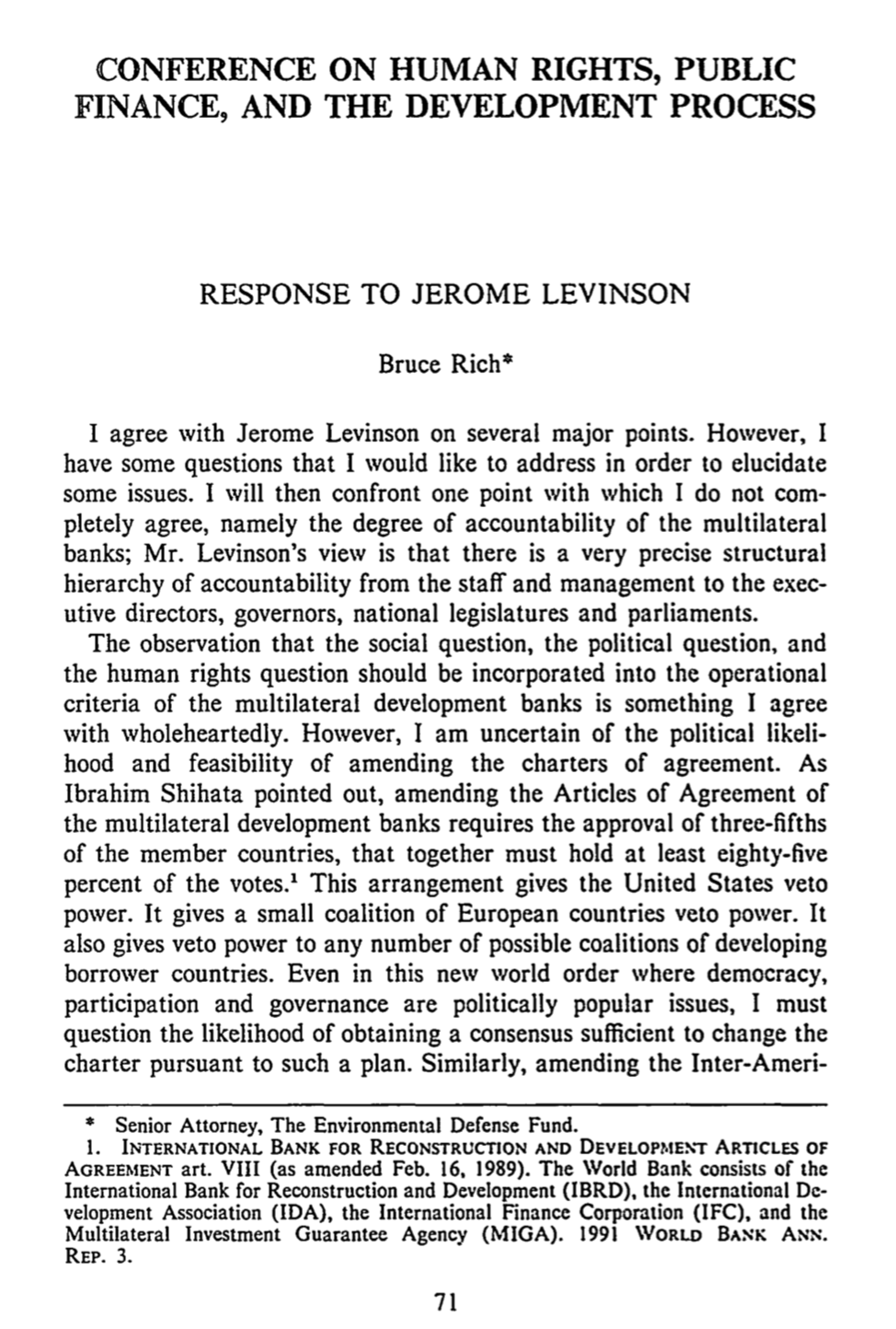- Bruce Rich
- American University International Law Review, Volume 8, Issue 1
- 1992
- pp. 71-75
Finally, I agree with Jerome Levinson that, in theory, there exists a structural hierarchy of accountability [in multilateral development banks]. However, I disagree with the notion that this hierarchy of accountability works well in practice. The examples I have cited illustrate the day-to-day reality. Many other factors make it extremely difficult for the executive directors and their small staffs to accurately evaluate and deal with the information that is presented to them. In reality, they have very little time to make their decisions. An average project in the World Bank might take two to three years to prepare. A loan for a hundred million dollars could involve thousands of pages of documents.Yet the executive directors receive the final appraisal report just thirteen working days before the deadline for their final decision to approve or reject the project....Under current practice, the only method for securing adequate review occurs in the exceptional cases when non-governmental groups bring additional information forward at the last moment.



